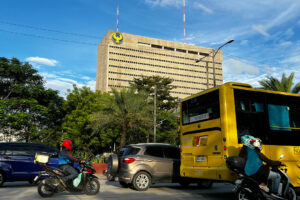A month after the consolidation deadline, public utility vehicles (PUV) nationwide are sufficient to cater to passengers, Transportation Secretary Jaime J. Bautista said during the Maritime Industry Authority’s (MARINA) 50th anniversary.
“Overall, we have enough capacity. Yung mga nagconsolidate are offering required seats here in Metro Manila [Overall, we have enough capacity. Those who consolidated were enough to transport commuters in Metro Manila],” he expressed.
He added that 80% of operators and drivers who consolidated in the PUV Modernization Program (PUVMP) were already enough to transit the commuters in Metro Manila and other cities.
In contrast with Mr. Bautista’s statements, the Passenger Forum’s Convenor Primo Morillo claimed in an interview last May 29 that there is an evident shortage of operating PUVs.
“The government should allow more public utility vehicles on road kasi kulang yung masasakyan ng mga commuters [The government should allow more public utility vehicles on the road because it cannot cover the number of commuters],” he stated.
Aside from this, he also raised his concern about the government’s modernization program and how it added to the burden not only on the livelihood of drivers and operators but also on commuters.
“Hindi nakakatulong itong pagpilit dun sa PUV modernization program nang hindi nasasaalang alang yung livelihood ng mga drivers and ng mga operators…even sa commuters kasi kulang na nga ang masasakyan [Without consideration to the people’s livelihood, the PUVMP did not help drivers, operators, and even commuters. We already have a shortage of PUVs],” Mr. Morillo said.
According to Land Transportation Franchising and Regulatory Board (LTFRB) Chairman Teofilo E. Guadiz, 160,000 units have met the PUVMP’s consolidation requirement. Meanwhile, 10,000 unconsolidated jeepney units nationwide are now considered colorum.
Apprehended colorum jeepneys could face different penalties such as a P50,000 fine for the operator, one-year suspension for the driver, and 30 days vehicle impound in Pampanga, the LTFRB elaborated in their official statement last May 16.
Rationalizing routes through LPTRP
Mr. Bautista further emphasized the need for the DoTr and LTFRB to work with local government units (LGUs) to rationalize routes through the Local Public Transport Route Plan (LPTRP).
“With the finalization of this LPTRP, talagang masisiguro natin na magiging profitable at sustainable yung mga ruta and that would mean pwede silang maginvest sa modern vehicles [With the finalization of LPTRP, we can ensure that the routes would be profitable and sustainable for our PUV drivers and operators to help them invest in modern vehicles,”] he explained.
As defined in the LPTRP Manual Volume 1 in 2017, LPTRP is a plan that details the route network, mode, and required number of units per mode of delivering public land transport services. – Almira Louise S. Martinez





